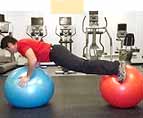Body Restoration Fat Loss:
Did you ever think about why your body holds onto fat?

Your body is programmed to hold onto fat.
You’ve designed it that way… I did the same thing, once.
Now, it’s time to break the cycle. Your body needs to understand that it’s time to shape itself, shed fat, and build muscle. Your body needs to increase its own signal and communication before allowing you to progress in strength and dominate your fat.
Your body holds onto fat because it feels you are endangering it.
Plain and simple. You hold onto fat because your body is worried about you…. and with good reason, and all due respect. With that said, it’s not your fault. If you fully understood the language of your body, you’d let it know that everything’s ok and you’re just making choices that make you happy.
…or do they?
I’d like to teach you the best communication strategy to your body so that you can begin restoring it and signaling to your central nervous system that it’s time to enhance function and progress self. It all starts with alignment…
Body Alignment:
Body alignment ultimately dictates whether or not pain receptor response is being signaled from your joints to your brain, asking muscles to turn off. When joints are out of position, it’s like putting two pointy objects against each other at a diagonal. The chances are, one of them can break very quickly with just a bit of pressure. As a result, your brain tells your muscles to turn off and back down.
No wonder it’s taking you more to build your metabolism… muscle = metabolism, and your muscles might not even be turning on… or they might be 30% efficient.
This is the most under-diagnosed situation I see in people who are trying to get fit. Less muscle fires during exercises than their counterparts who shed fat in weeks instead of months. With this in mind, don’t you think we should learn how to activate muscle a bit more easily?
Build joint alignment for increased muscle signaling. Then, work muscles at different speeds and angles. Lastly, think about what you’re doing. Let’s talk about each one:
Working Muscles At Different Speeds:
Your muscles are composed of Type I, Type IIa, and Type IIb fibers. This refers to the amount of oxygen (left) to glucose (right) the muscle fiber relies on for energy. In a type IIb fiber, it’s purely glycolytic, or sugar-consuming. These are the fast-twitch muscles and they don’t last long.
Summary point: Sprint fibers don’t last long… duh! (but they eat sugar – that’s cool)
After your Type IIb muscle fibers tire out, your Type IIa fibers kick in, burning up your excess sugar-based energy and beginning to consume surrounding oxygen molecules bound to hemoglobin in the area. This lasts for about 60-120 seconds.
Summary point: ‘Average’ fibers last for 1-2 minutes (but they help us keep going and also eat sugar – pretty cool.)
Following Type IIa fatigue, your Type I muscle fibers rely solely on oxygen and help you finish your set. Now, you’re working in the presence of oxygen, building endurance, and healing joints… which, as you might imagine, is an important signal to your brain to turn muscle back on.
Summary point: Slow fibers eat oxygen, which is needed for adequate circulation and healing of joints. If joints feel they are endangered, your brain turns off surrounding muscles and pads the joint with fat. (we need these guys!)
Working Muscles At Different Angles:
Depending on the muscle, muscle fibers may run in as many as 3-5 different directions. This means that angular variety to exercise is very important to stimulate full muscle contractions. This is the reason that people do incline bench press as well as bench, but is this really it? Have we reached all of the fibers? Just by doing bench press, incline bench press, butterfly, and decline bench press we haven’t hit all of the fibers.
I humbly discovered something when I first mastered anatomy. Having spent hundreds if not a thousand hours in the anatomy lab, I now have X-Ray vision with exercise. I can tell when a muscle is being stressed properly, or when malalignment is taking place ever so slightly. This is what I do.
Well, as it turns out, muscle actions dictate whether or not a muscle fiber is being recruited. For example, the pecs have 3 actions: Adduction (moving arm towards your other arm), Flexion (raise arm up), Internal Rotation of the humerus (turn thumb down)
So, in order to hit all fibers of the pecs, you’d need to add all three movements at different angles.
Think About What You’re Doing:
Your muscles contract because of 2 areas in your brain. First is your Pre-Motor Area; second is your Motor Area, or movement execution center. You’ll want to use both centers if you want to maximize signal to your muscle.
Your pre-motor area is where you plan movement. Movement planning efficiency can actually yield up to 30% greater contractile strength. So, in short, if you can think about and properly visualize a movement before executing it, you can lift 30% more weight, and get results 30% faster.
Your motor area is where you send the command to move. So long as your joints are properly aligned and there’s no acute danger or injury, your body is primed to activate as much muscle as possible.
Sweet deal, huh?
 Health and fitness results are difficult to achieve if you don't have a targeted as specific plan from the start. A properly guided exercise program involves goal setting...
Health and fitness results are difficult to achieve if you don't have a targeted as specific plan from the start. A properly guided exercise program involves goal setting...

 Your body is programmed to hold onto fat.
Your body is programmed to hold onto fat.